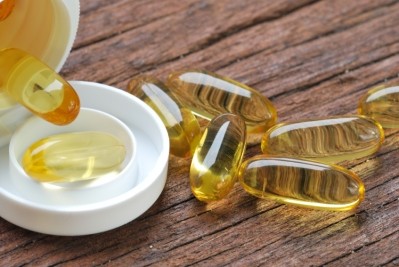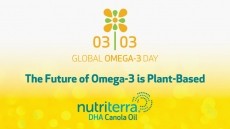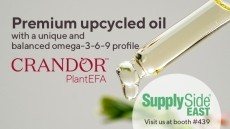Quality and science still strong for omega-3: GOED’s 2016 review

The dietary supplement, infant formula, seafood, and pharmaceutical industries all have their detractors, and it is easy to aim for omega-3s which are sold in all of these markets. However, there are still so many positive things happening in our little corner of human nutrition, that this remains one of the most exciting fields in which companies can participate.
The omega-3 business was built on a solid foundation of positive science, so let’s start there. As of mid-December, 231 randomized controlled trials in humans have been published on omega-3s this year. The encouraging aspect to that statistic is that by the end of the year, 2016 will be the most prolific year for omega-3 clinical studies in history. More importantly, in 85% of these trials, the authors have concluded omega-3s were beneficial. This confirms the long-term trend we have seen where the rate of investment into omega-3 clinical research is still increasing even if the market is starting to mature, and that there continues to be a very high rate of positive findings.
Digging deeper into these studies, we find that 59% of these studies were conducted using dietary supplements, while only four of them used seafood interventions. Pharmaceutical trials showed the highest rates of positive findings (96% of studies), but supplement, infant formula, functional food and clinical nutrition trials all saw success rates exceeding 84%.
Credibility
In trying to earn credibility for EPA and DHA, we constantly fight a number of biases, including claims that nearly all omega-3 trials fail to show a benefit, that only seafood studies have shown benefits while supplement trials have not, or that only pharmaceutical omega-3 trials have demonstrated effects. These are unfortunate characterizations because they are not backed up by data and all of the varied vehicles that deliver EPA and DHA to consumers or patients serve specific needs, so denigrating one type of omega-3 product over another does a disservice to consumers.
Quality is another underpinning of the omega-3 space that has been very positive for the industry in 2016. The industry banded together in 2004 to create what was known as the CRN Voluntary Monograph, today known as the GOED Voluntary Monograph. It was the first global standard that set limits for oxidation and contamination in omega-3 products. It also described methods on how to measure the EPA and DHA content.
The media, however, has targeted the omega-3 industry in the past 12-18 months with allegations that retail products are commonly over safe limits for oxidation and do not contain the amount of omega-3s claimed on the label. These are serious allegations and the industry should want to address any problems that exist. Besides, we have known for some time that fishy-tasting products can drive consumers away from the category and we should not accept that.
The oxidation issue
However, despite the media hype, multiple independent bodies have tested products in 2016 and have come independently to the same conclusions: omega-3 products on retail shelves generally meet conservative oxidation limits and are accurately labeled. In response to allegations raised by a paper in New Zealand, the Australian government and Omega-3 Centre separately sampled 10 products from retail shelves and both found 100% compliance with their regulatory limits for oxidation. GOED commissioned multiple independent third-party labs to test 47 products from New Zealand, and this investigation found similarly high levels of compliance (results submitted for publication).
In the US, ConsumerLab.com released its bi-annual tests of omega-3 products and found that 46 of the 47 products it tested contained the labeled amounts of EPA and DHA and all products complied with GOED’s oxidation limits.
Labdoor.com also tested 51 omega-3 products and their results show that 90% complied with GOED’s oxidation limits and 100% were below the less-conservative limits for oxidations required of other edible oils. The positive in all of this is that while oxidation and label accuracy are sensational issues in the media, compliance within the industry to regulatory limits and even stricter self-imposed limits is reasonably high.
Advancing science and quality
Our industry has also continued to unite behind organized efforts to help advance both the scientific and quality fields within omega-3s even further. In 2014 and 2015, the industry worked on a consumer education campaign that saw moderate success in the US, even though it was underfunded. In 2016, some of those same companies continued to invest in clarifying the science on omega-3 benefits and deepening our understanding of how the quality of omega-3 products can change over time.
We have two meta-analyses in the process of being published, looking at the effects of omega-3s on coronary heart disease and cardiac death. We think these two papers will help clarify why many similar meta-analyses have found no significant benefits in cardiovascular disease.
In addition, our industry is making a deeper commitment to understand oxidation and its effects, and hold the US industry more accountable. We are funding studies that explore how dozens of oxidative compounds form in oils over time, mining a diverse database of oxidation tests on thousands of omega-3 and other edible oil products, and starting to annually test and publish oxidation and label accuracy results on the top fifty selling products in the US (which account for half of all consumption). In addition, we are working on guidance documents to help the industry learn how to handle and utilize omega-3 oils in their facilities to create the highest-quality, freshest products possible.
So while the market growth has slowed in recent years, the two factors that helped this market grow at double-digit rates for more than 30 years, quality and science, are still strong. Going forward, we need the industry to continue to collaborate even more and double-down on its commitment to make high-quality products that not only have an important positive impact in public health, but that consumers want to consume.

















